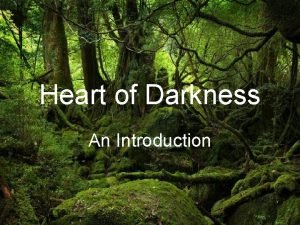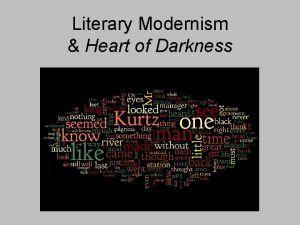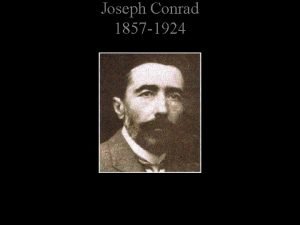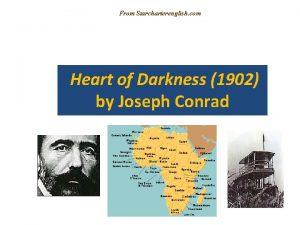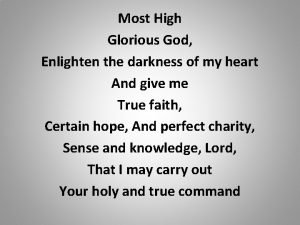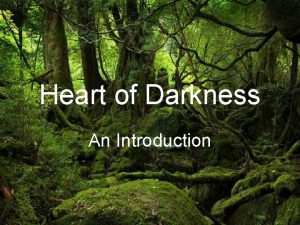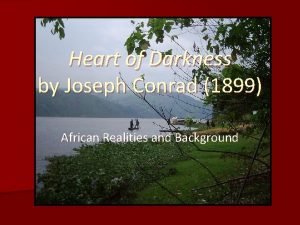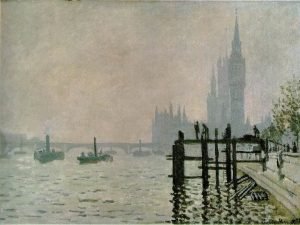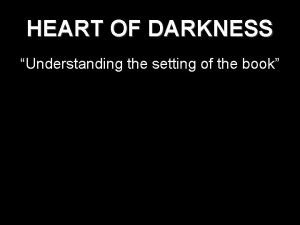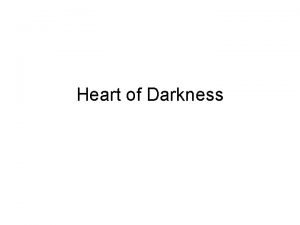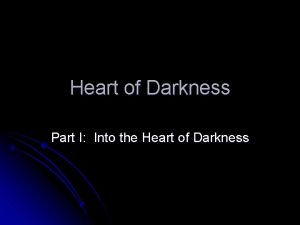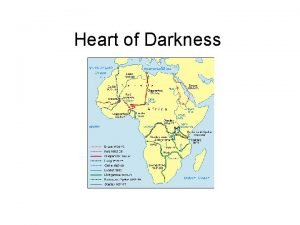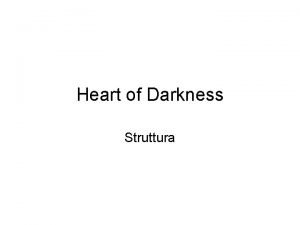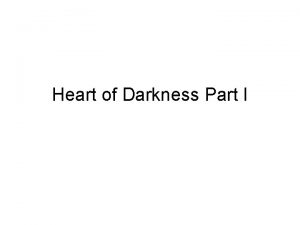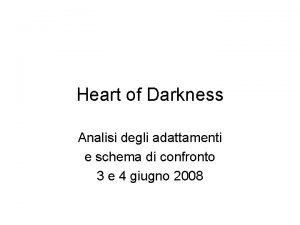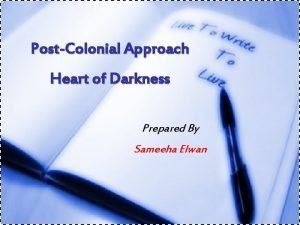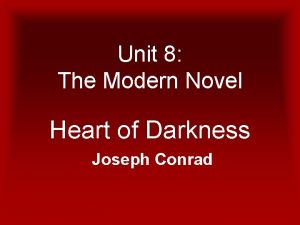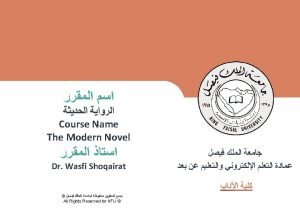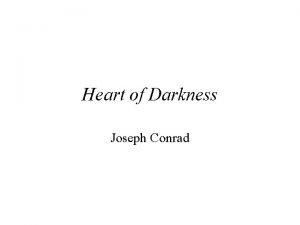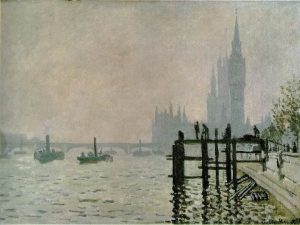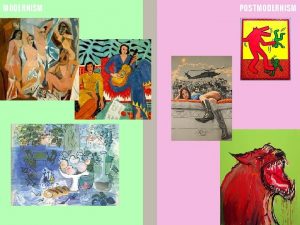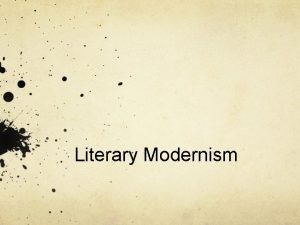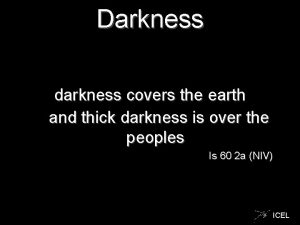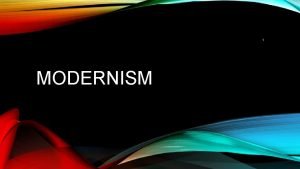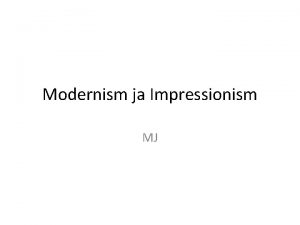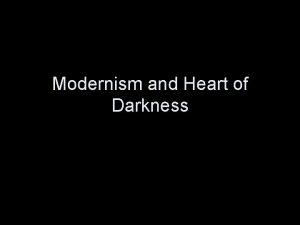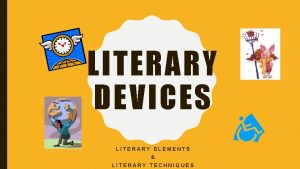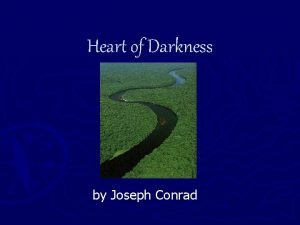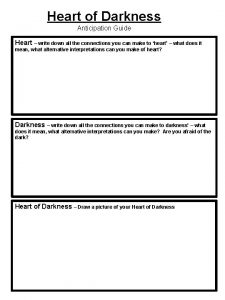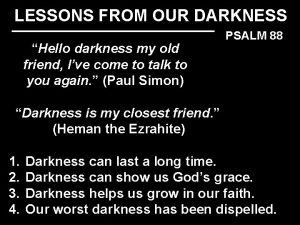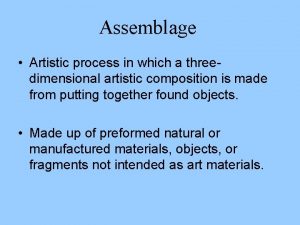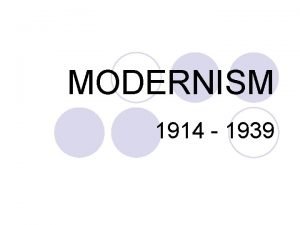Literary Modernism Heart of Darkness Artistic Shifts 19





















- Slides: 21

Literary Modernism & Heart of Darkness

Artistic Shifts, 19 th – 20 th Century • • Realism Impressionism Modernism Conrad = the bridge from Impressionism to Modernism (uses both approaches) • Early Modernism • “High” Modernism (post-WWI)

William Powell Frith, Annie Gambart (1851)

Edgar Degas, The Absinthe Drinker (1875)


Max Beckmann, Self-Portrait with Horn (1938)



William Quiller Orchardson, Her Mother’s Voice (1888)

August Renoir, La Moulin de la Galette (1885)


Pablo Picasso, Les Demoiselles d’Avignon (1907)



Realism Outside/Public Society Wholeness Linearity Verisimilitude Modernism Inside/Interiority Subjectivity Fracture Time-shifts, repetition Self-consciousness

Modernist Narrative • Structured by flow of consciousness and memory • Associative, not linear • Interior monologue, “stream-ofconsciousness, ” flashforward/flashback • Jumps in space and time • Narrative frame • Continuous, fragmented, suggestive, evocative, irrational, introspective • Influenced in part by psychoanalysis

Woolf, The Waves (1931) Let us inhabit the underworld. Let us take possession of our secret territory, which is lit by pendant currants like candelabra, shining red on one side, black on the other. Here, Jinny, if we curl up close, we can sit under the canopy of the currant leaves and watch the censers swing. This is our universe. The others pass down the carriagedrive. The skirts of Miss Hudson and Miss Curry sweep by like candle extinguishers. Those are Susan's white socks. Those are Louis' neat sand-shoes firmly printing the gravel. Here come warm gusts of decomposing leaves, of rotting vegetation. We are in a swamp now; in a malarial jungle. There is an elephant white with maggots, killed by an arrow shot dead in its eye.


Challenges for Readers • Narrator/author evokes or suggests, does not explain • Involves personal symbol system and new, previously forbidden subjects • Unsettles readers’ expectations • Use of time/space can be bewildering • Open-ended, ironic, multi-layered, inconclusive • The process/search/journey may have meaning in itself but goal is not reached • Reader must be active co-creator of meaning

Coping Strategies • Preview vocabulary ahead of time to familiarize yourself with new words. • Notice when you’re struggling– struggle indicates something is happening. What’s hard about it? • See if you can name thing that’s happening. (ex: The time seems to be changing all over the place. ) • REREAD. Modernist texts demand but also reward close reading. • Remember that unsettling the reader is part of the point of modernist narrative.

Works Cited and Consulted Agatucci, Cora. “Joseph Conrad and Early Modernism. ” English 109. Course homepage, Spring 2007. Central Oregon Community College. 13 May 2012. O’Malley, Seamus. “Realism, Impressionism, Modernism. ” 20 th Century British Literature. Course homepage, Spring 2014. Stern College, Yeshiva University. 4 May 2014.
 Modernism in heart of darkness
Modernism in heart of darkness Modernism heart of darkness
Modernism heart of darkness Heart of darkness part 3
Heart of darkness part 3 Themes of heart of darkness
Themes of heart of darkness Impressionism in writing
Impressionism in writing Heart of darkness symbol
Heart of darkness symbol O most high and glorious god
O most high and glorious god Heart of darkness impressionism
Heart of darkness impressionism Themes of heart of darkness
Themes of heart of darkness Heart of darkness
Heart of darkness Heart of darkness setting
Heart of darkness setting Heart of darkness pages
Heart of darkness pages Heart of darkness deaths
Heart of darkness deaths Heart of darkness map
Heart of darkness map Tim roth heart of darkness
Tim roth heart of darkness Heart of darkness narrator
Heart of darkness narrator Heart of darkness analisi
Heart of darkness analisi Edward said two visions in heart of darkness
Edward said two visions in heart of darkness Heart of darkness as a modern novel
Heart of darkness as a modern novel Heart of darkness part 2 summary
Heart of darkness part 2 summary Conrad heart of darkness summary
Conrad heart of darkness summary Heart of darkness map
Heart of darkness map
